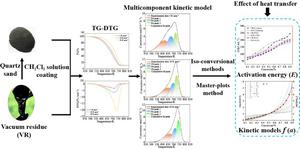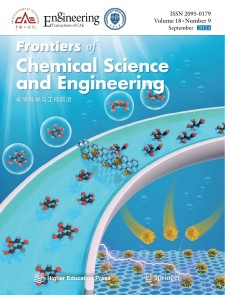Kinetic study of the effect of thermal hysteresis on pyrolysis of vacuum residue
Abstract
Investigating the thermal hysteresis and its effect on the kinetic behaviors and reaction model of vacuum residue pyrolysis is of significant importance in industry and scientific research. Effects of heating rate and heating transfer resistance on the pyrolysis process were examined with the thermogravimetric analysis. The kinetic characteristics of the vacuum residue pyrolysis were estimated using the iso-conversional method and integral master-plots method based on a three-stage reaction model through the deconvolution of Fraser-Suzuki function. Results showed that the reaction order models for the first and second stages were associated with the evaporation of vapor, while the nucleation and growth models for the third stage were linked to char formation. During the pyrolysis, the thermal hysteresis led to an increase in the reaction order in the first stage, which resulted in a delayed release of generated hydrocarbons due to high heating rate and enhanced heat transfer resistance. The reaction in the last stage primarily involved coking, where the presence of an inert solid acted as a nucleating agent, facilitating char formation and reducing the activation energy. The optimization results suggest that the obtained three-stage reaction model and kinetic triplets have the potential to effectively describe the active pyrolysis behavior of vacuum residue under high thermal hysteresis.


 求助内容:
求助内容: 应助结果提醒方式:
应助结果提醒方式:


